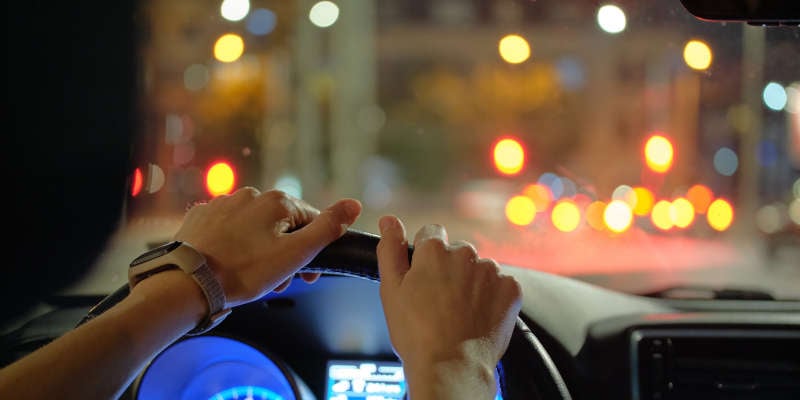Auto insurance is required in most states, but it’...
 It can be risky to drive at dusk or at night. In the US alone, more than 32,000 people lose their lives in motor vehicle accidents every year.
It can be risky to drive at dusk or at night. In the US alone, more than 32,000 people lose their lives in motor vehicle accidents every year.
While it may be true that some people find driving at night simpler than others, there is no doubt that it is more dangerous than driving during the day. According to the National Safety Council, even though there are fewer cars on the road, half of the traffic-related deaths occur at night.
There are many reasons why night driving is more dangerous, mostly due to poor vision, but here are a few more.
Remember to review your auto insurance policy annually. It is important to make sure you have the coverage you need depending on your individual situation. Your agent should be able to provide you with the auto insurance options and coverage you need.
Use these safety guidelines to help you get through the night.
According to the National Highway Traffic Safety Administration information, (NHTSA), drowsy driving crashes are most likely to occur between the hours of 11 p.m. and 6 a.m. So be aware that there may be tired drivers on the road during these hours and stay attentive.
Get some caffeine in your system, pull over in a safe spot to relax, or make a nighttime stop. Other things that have been found to help include putting on the radio (not too loudly), rolling down the windows for fresh air, drinking water, and talking or singing to yourself.
Looking at your phone during the night might impair your vision, making it much more difficult to ensure that the road is safe. Simply said, you need as much response time and attentiveness as possible.
Driving defensively entails more than just reacting to a circumstance. It includes planning ahead, keeping an eye on your surroundings, and being ready for any threats or potential mishaps. Every time anyone gets behind the wheel, you should practice becoming a defensive driver.
When you're driving, you can come across a driver who appears to be driving badly. They could be driving on the lane marker or in the middle lane, driving too slowly or too quickly, drifting in and out of lanes, or tailgating. If you see someone driving like this, keep a safe distance from them and their vehicle.
Because your headlights are a very important tool you have at your disposal when driving at night, it's critical that they work properly. Set aside sometime before you need your headlights to make sure they're working properly if you haven't used them in a while.
If you're buying a new automobile or driving one for the first time, be sure you know how to turn on the headlights and high beams; some settings are more straightforward than others.
When driving at dusk or dark, in urban areas, or well-lit neighborhoods, your vehicle's conventional headlights should provide enough visibility.
You may need to use your vehicle's high beams to see the road properly in rural areas or on roads with few streetlights. As soon as you spot an approaching car, turn off your high lights. When traveling behind another vehicle, never use your high headlights.

Clean the inside windows of your vehicle before leaving, especially if you smoke. To improve vision, clean the exterior of the windows, mirrors, and headlights. This is commonly ignored, but unclean or streaky windows can seriously impair truck drivers' night vision.
At night, your speed can have an impact on your safety. Even though there are fewer cars on the road at night, you do not need to speed to get where you want to go. One thing to keep in mind is that at night, there are frequently more officers on the road looking for intoxicated drivers or those who are driving recklessly.
Make an effort to avoid staring directly into the headlights of oncoming traffic. As your eyes acclimate to low-light conditions, their pupils dilate, allowing more light in.
This means that a fast, powerful beam of light, such as one from an approaching car, can easily impair your night vision and render you unable to see for several moments afterwards.
At Leap | Carpenter | Kemps Insurance Agency, we actually think insurance is fun! Let us shop for you from among over 200 insurance companies and get you the best deal for your dollar, including preferred premium pricing and multiple policy discounts.
Our Personal Insurance is just that coverage designed for you specifically, because your needs and lifestyle are not the same as your neighbor’s.
Auto insurance is required in most states, but it’...
No matter where you plan to travel, purchasing a t...
The majority of millennials are facing big debts, ...
Leap | Carpenter | Kemps Insurance Agency provides Commercial Business Insurance, Employee Benefits, Life and Health Insurance, and Personal Insurance to all of California, including Merced, Atwater, Los Banos, Mariposa, Madera, Fresno, Modesto, Turlock, and Stockton.
CA License Number 0646081 | Licensed to do business in California, Arizona, Hawaii, Idaho, Montana, Nevada, North Carolina, Oklahoma, Oregon, Virginia, West Virginia and Washington.
© Copyright 2023 Leap | Carpenter | Kemps Insurance Agency — Privacy Policy | Terms & Conditions.
Merced Office
3187 Collins Drive
Merced, CA 95348
Phone: (209) 384-0727
Additional Contacts
Toll Free: (800) 221-0864
Fax: (209) 384-0401